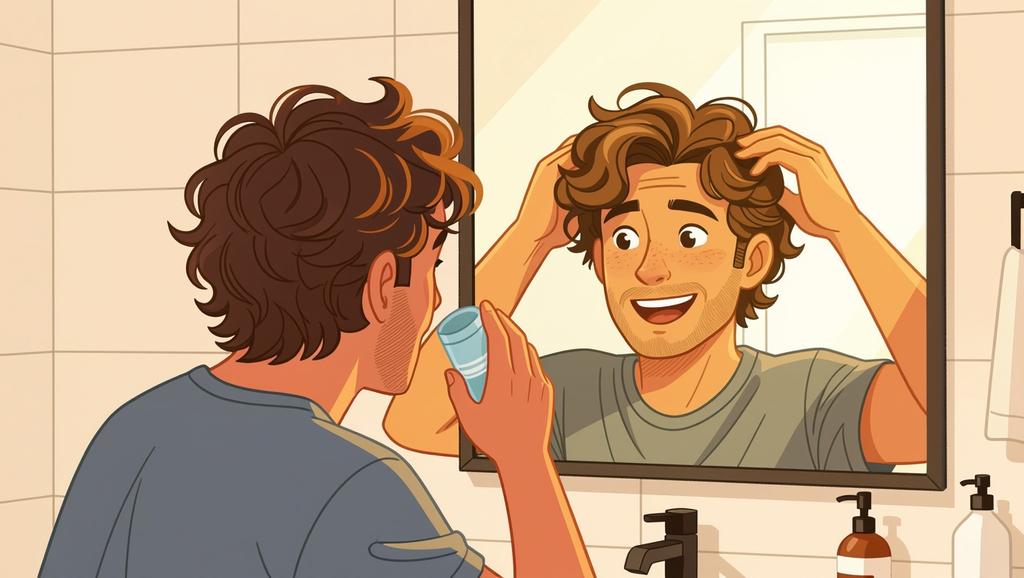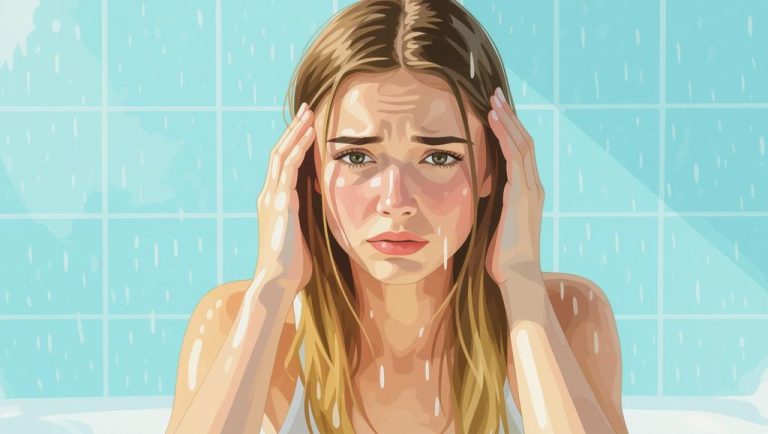Common causes of hair tangling
Hair texture and type
One of the main reasons why does my hair tangle so easily is due to its natural texture and type. Fine hair tends to tangle more easily than thicker strands because it has less weight to keep it smooth. If you have fine hair, you might find that it gets tangled more often. On the other hand, curly and kinky hair types are also prone to tangling because the curls can interlock with each other, creating knots. The more curls you have, the more likely your hair will tangle. It’s like trying to untangle a bunch of wires; the more there are, the harder it gets. I’ve noticed that my own hair, which is on the finer side, gets tangled quite easily, especially after a windy day.

Curly hair, for example, has a natural tendency to twist and turn, which can lead to tangles if not properly managed. I remember a friend of mine with beautiful curly hair always complaining about how her hair would get tangled after a night’s sleep. The key here is understanding your hair type and treating it accordingly to minimize tangles.
Environmental factors
Environmental factors play a significant role in hair tangling. Humidity can cause the hair cuticle to swell, making it more susceptible to tangles. I’ve experienced this myself when visiting humid places; my hair would turn into a frizzy, tangled mess. Wind is another culprit that can whip your hair around, causing it to knot up. I recall a windy day at the beach where my hair was a complete disaster by the end of the day. Additionally, exposure to the sun can dry out your hair, making it more prone to tangling. Protecting your hair from these environmental factors can significantly reduce tangles.
Hair care practices
Your hair care routine can either help or hinder the tangling process. Not brushing your hair regularly is a major cause of tangles. I used to skip brushing my hair at night, and I’d wake up with a bird’s nest on my head. Using the wrong type of brush can also lead to more tangles. For instance, using a fine-tooth comb on wet hair can cause breakage and tangles. Overuse of heat styling tools can damage the hair, making it more susceptible to knots. I’ve learned that using a heat protectant and limiting the use of these tools can help keep my hair tangle-free.
The science behind hair tangling
Cuticle layer and hair structure
The cuticle layer of the hair is like the shingles on a roof; when they lay flat, the hair is smooth and less likely to tangle. However, when the cuticle is damaged or lifted, it creates more friction between strands, leading to tangles. I’ve noticed that after coloring my hair, the cuticles seem more prone to lifting, which results in more tangles. The structure of the hair itself, whether it’s straight, wavy, or curly, also influences how easily it tangles. Understanding the science behind this can help you take better care of your hair.
Friction and static electricity
Friction and static electricity are major contributors to hair tangling. When hair rubs against itself or other surfaces, it can create knots. I’ve found that sleeping on a cotton pillowcase increases friction, leading to more tangles in the morning. Static electricity, often caused by dry air or certain fabrics, can make hair stand up and tangle. Using a humidifier in my room has helped reduce static and, consequently, tangles. It’s fascinating how these seemingly small factors can have such a big impact on our hair.
How to prevent hair tangling
Proper hair washing techniques
Washing your hair correctly can significantly reduce tangles. Using a sulfate-free shampoo can help maintain the hair’s natural oils, reducing dryness and tangling. I’ve switched to a sulfate-free shampoo, and it’s made a noticeable difference in how my hair feels. It’s also important to rinse your hair thoroughly to remove any product buildup, which can cause tangles. I make sure to double shampoo when I feel like my hair needs a deeper clean.
Effective conditioning and detangling
Conditioning is crucial for keeping hair tangle-free. Applying conditioner and then using a wide-tooth comb to detangle while the conditioner is still in can help prevent knots. I’ve found that this method works wonders for my hair, especially after swimming in a pool. Deep conditioning treatments can also provide extra moisture, reducing the likelihood of tangles. I try to do a deep conditioning treatment at least once a week to keep my hair smooth and manageable.

Choosing the right hair tools and accessories
The right tools and accessories can make a big difference in managing tangles. Using a soft, boar bristle brush for fine hair or a nylon bristle brush for coarse hair can help detangle without causing damage. I’ve invested in a good quality brush, and it’s been a game-changer for my hair. Microfiber towels are also gentler on the hair than traditional towels, reducing friction and tangles. I’ve started using a microfiber towel to dry my hair, and it’s helped keep my hair smoother.
Lifestyle changes to reduce hair tangling
Diet and hydration
What you eat and drink can affect your hair’s health and its tendency to tangle. A diet rich in vitamins and minerals, especially those that support hair health like biotin and omega-3 fatty acids, can help keep your hair strong and less prone to tangles. I’ve noticed that when I’m not eating well, my hair becomes more brittle and tangles easily. Staying hydrated is also crucial, as water helps maintain the hair’s elasticity, reducing tangles. I make sure to drink plenty of water throughout the day to keep my hair in good condition.
Protective hairstyles and routines
Protective hairstyles can help minimize tangles, especially if you have curly or kinky hair. Styles like braids or buns keep the hair contained and reduce friction. I’ve found that wearing my hair in a loose braid at night helps prevent tangles. Additionally, changing your sleep habits, such as using a silk pillowcase, can reduce the friction that causes tangles. I switched to a silk pillowcase a few months ago, and it’s made a big difference in how my hair looks in the morning.
When to seek professional help
Signs of underlying hair issues
If you’re experiencing excessive tangling despite following all the right practices, it might be a sign of an underlying hair issue. Conditions like trichotillomania or hormonal imbalances can lead to increased hair tangling. I once had a friend who noticed her hair tangling more than usual, and it turned out to be a sign of a thyroid issue. If your hair is breaking off or falling out in addition to tangling, it’s a good idea to consult a professional.
Consulting a dermatologist or trichologist
A dermatologist or trichologist can help diagnose and treat underlying hair issues that may be causing tangling. They can perform tests to determine if there’s a medical reason for your hair tangling. I’ve heard stories of people who found relief from their hair issues after consulting a specialist. If you’re unsure about what’s causing your hair to tangle, a professional consultation can provide clarity and solutions.
Conclusion: Embrace tangle-free hair with these tips
Understanding why does my hair tangle so easily is the first step to managing it effectively. By addressing the common causes, understanding the science behind it, and implementing preventative measures, you can enjoy smoother, tangle-free hair. From choosing the right hair products and tools to making lifestyle changes, there are many ways to keep your hair in check. Remember, it’s all about finding what works best for your hair type and sticking to a routine that promotes healthy, tangle-free hair. With these tips, you can say goodbye to knots and hello to smooth, manageable locks.
why does my hair get tangled easily is a common question, and by following the advice in this article, you can find the answers and solutions you need. Whether it’s through better hair care practices, the right products, or lifestyle adjustments, you can achieve the tangle-free hair you’ve always wanted.
Read more Why Do Native Americans Wear What They Wear?
Don’t let tangles hold you back from loving your hair; embrace these tips and enjoy the freedom of smooth, beautiful locks.













